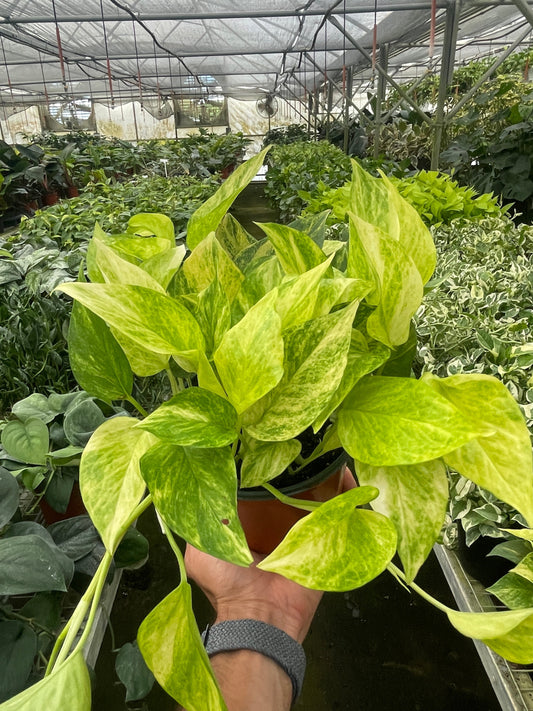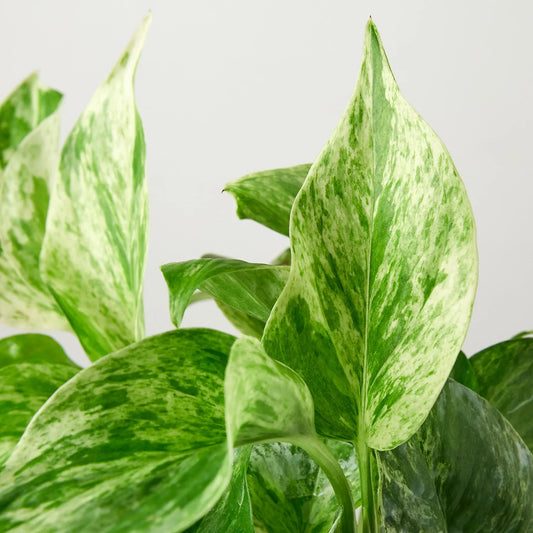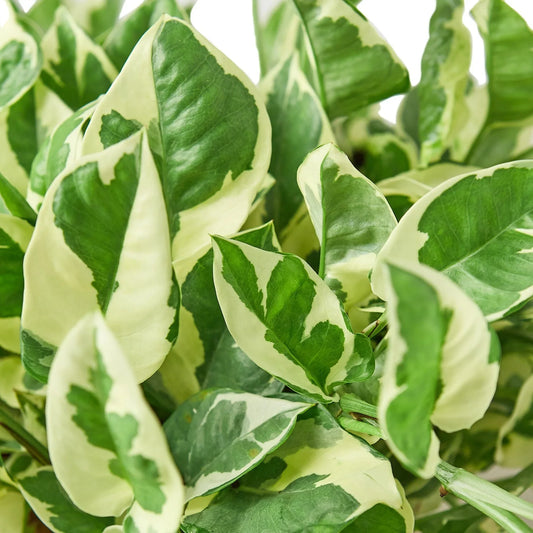How To Get New Growth On My Ficus Alii
Cafe Planta Team
Ficus Alii, with its elegant, elongated leaves, is a popular choice for plant lovers seeking to add a touch of greenery to their spaces. But what happens when your Ficus Alii seems stuck in a growth rut? You might find yourself yearning for those fresh, vibrant leaves that breathe life into your home. Don't fret; getting new growth on your Ficus Alii is entirely possible with a bit of attention and care.
This article will guide you through the key factors that contribute to new growth in your Ficus Alii. From understanding its light and water needs to ensuring the right soil conditions and dealing with pests, we'll cover everything you need to know. Let's dive into the details and get your Ficus thriving!
Understanding Light Requirements
Light, as you might guess, is one of the most important factors for the health and growth of your Ficus Alii. These plants are native to the tropical regions of Asia, where they bask in filtered sunlight under the forest canopy. This means they're used to bright, indirect light, which you should aim to replicate in your home.
Position your Ficus Alii near a window that receives plenty of light but not direct sunlight. Direct sunlight can be too harsh and may scorch the leaves, leading to browning and stunted growth. If you don’t have a spot with enough natural light, consider using grow lights as an alternative. They can help supplement the light your plant needs, especially during the shorter days of winter.
- East-facing windows are ideal as they provide bright, indirect light.
- North-facing windows may not offer enough light, so consider additional lighting.
- South or west-facing windows can work if the light is filtered through a sheer curtain.
Remember, even the best-lit spot might need adjusting as the seasons change. Keep an eye on your plant and adjust its position if you notice it reaching or leaning towards the light source.
Watering Wisely
Watering is another crucial aspect of encouraging new growth. However, it's easy to make mistakes here. Too much water can lead to root rot, while too little can cause your plant to dry out. So, how do you find the right balance?
The key is to let the top inch or two of soil dry out before watering again. Insert your finger into the soil to check its moisture level. If it's dry, it's time to water. Make sure the pot has drainage holes to allow excess water to escape, preventing soggy soil.
During the growing season, usually spring and summer, your Ficus Alii will require more water as it actively grows. In the fall and winter, when growth slows, you can reduce the frequency of watering.
- Water thoroughly, allowing excess water to drain out of the pot.
- Avoid letting the plant sit in water, which can lead to root rot.
- Consider using a moisture meter if you're unsure about the soil's moisture level.
A good watering schedule and technique will keep your Ficus Alii happy and ready to push out new growth when conditions are right.
Soil and Potting Needs
Ficus Alii likes well-draining soil that allows roots to breathe while retaining enough moisture to keep them hydrated. A mix that includes equal parts potting soil, perlite, and peat moss or coconut coir usually works well. This combination ensures proper drainage and aeration.
When it comes to potting, ensure your Ficus Alii has enough room to grow. If the roots are circling the pot or poking out of the drainage holes, it might be time for a bigger pot. Repotting is best done in spring, which aligns with the plant's natural growth cycle.
- Choose a pot that is one size larger than the current one.
- Ensure the new pot has drainage holes to prevent waterlogging.
- Be gentle when removing the plant from its old pot to avoid damaging the roots.
Repotting not only gives the roots more space to grow but also refreshes the soil, providing your plant with new nutrients essential for growth.
Feeding Your Ficus Alii
Like any living creature, your Ficus Alii needs food to thrive. During the growing season, consider feeding your plant with a balanced liquid fertilizer every four to six weeks. This provides essential nutrients that fuel new growth.
When selecting a fertilizer, look for one with equal parts nitrogen, phosphorus, and potassium, often labeled as a 10-10-10 or 20-20-20 fertilizer. Dilute it to half the recommended strength to avoid over-fertilizing, which can damage the roots.
- Fertilize less frequently in the fall and winter when growth naturally slows down.
- Always water your plant before applying fertilizer to prevent root burn.
- Organic options, like compost tea or fish emulsion, can also be beneficial.
Regular feeding during the active months can significantly boost your Ficus Alii's growth, resulting in a lush, vibrant plant.
Pruning for New Growth
Pruning isn't just about keeping your plant neat and tidy; it also encourages new growth. When you prune your Ficus Alii, you're essentially removing old or damaged leaves, which allows the plant to focus its energy on producing fresh, new foliage.
Use clean, sharp scissors or pruning shears to make cuts just above a leaf node. This is where new growth will emerge. Regular pruning not only shapes the plant but also improves airflow, reducing the risk of pests and diseases.
- Inspect your plant regularly and remove any yellowed or damaged leaves.
- Prune in spring or early summer for the best results.
- Avoid heavy pruning in the fall or winter when the plant's growth slows.
By investing a little time in pruning, you encourage your Ficus Alii to grow fuller and healthier, making it a standout feature in your home.
Dealing with Pests
Pests can be a real headache for plant parents, and your Ficus Alii is no exception. Common pests like spider mites, scale, and mealybugs can stunt growth and damage your plant. But fear not; there are ways to manage these unwelcome guests.
Regularly inspect your plant for signs of pests. Look for webbing, sticky residue, or visible insects on the leaves. If you spot any, act quickly to prevent them from spreading.
- Use a gentle insecticidal soap or neem oil to treat affected areas.
- Wipe down leaves with a damp cloth to remove pests manually.
- Ensure good air circulation around the plant to minimize pest issues.
By staying vigilant and addressing pest problems promptly, you can protect your Ficus Alii and keep it growing strong.
Temperature and Humidity
Ficus Alii thrives in environments that mimic its tropical origin—warm and humid. Aim to keep your home within the temperature range of 60-75°F (15-24°C). Avoid placing your plant in drafty areas or near heating vents, as sudden temperature changes can stress the plant.
Humidity is another factor to consider. Indoor air can be quite dry, especially in winter. To increase humidity, you can:
- Use a humidifier nearby.
- Place a tray of water near the plant, allowing it to evaporate.
- Mist the leaves occasionally, but avoid overdoing it.
Creating a stable environment with consistent temperature and humidity will go a long way in supporting your Ficus Alii's growth.
Creating the Right Environment
Aside from light, water, and nutrients, the overall environment plays a significant role in your plant's health. Providing a stable and nurturing environment includes ensuring the right pot size, soil, and even the surrounding decor.
Consider grouping your Ficus Alii with other plants. Not only does this create a mini ecosystem that can boost humidity, but it also creates an attractive display that enhances your home's aesthetic.
- Ensure plants are spaced appropriately to allow for growth and airflow.
- Rotate your plant regularly to ensure even growth on all sides.
- Clean leaves occasionally to remove dust, allowing for optimal photosynthesis.
By taking a holistic approach to your plant's environment, you'll set the stage for your Ficus Alii to flourish.
Consistency is Key
Finally, consistency in care is perhaps the most important factor in encouraging new growth. Plants thrive on routine, and your Ficus Alii is no different. By establishing a consistent watering, feeding, and maintenance schedule, you'll create a predictable environment in which your plant can thrive.
Keep a plant journal or calendar to track care activities. This helps you stay on top of tasks like watering, feeding, and checking for pests. Over time, you'll develop a rhythm that suits both you and your plant.
- Set reminders for watering and feeding.
- Note any changes in the plant’s health or appearance.
- Adjust care routines as needed based on seasonal changes.
With consistent care, patience, and a bit of trial and error, your Ficus Alii will reward you with new, healthy growth.
Final Thoughts
Growing a thriving Ficus Alii is all about understanding its needs and responding with thoughtful care. By focusing on light, water, soil, nutrients, and environment, you'll create the perfect conditions for your plant to flourish.
At Cafe Planta, we’re passionate about helping you succeed with your plant journey. Whether you’re looking for a new addition to your collection or need advice on plant care, we’re here to help. Feel free to email us or reach out on Instagram. Let’s grow together and transform your space with the beauty of plants!



















